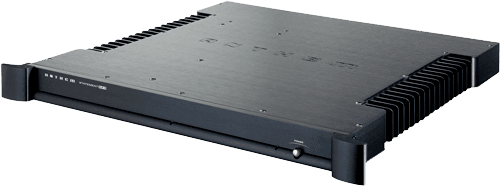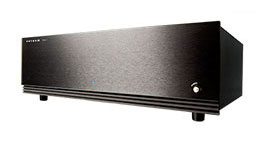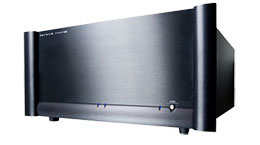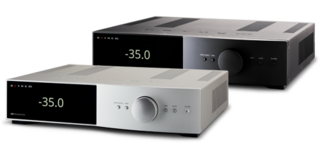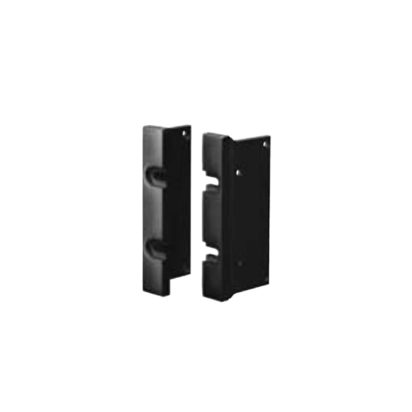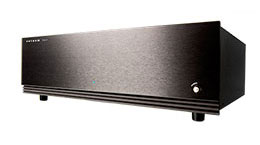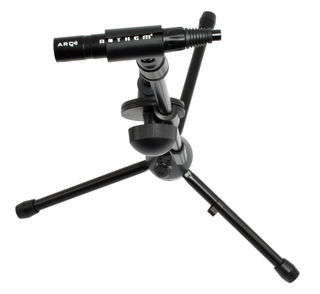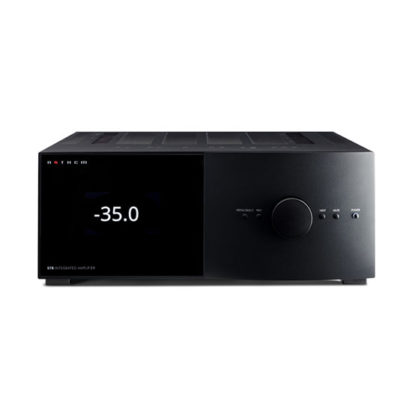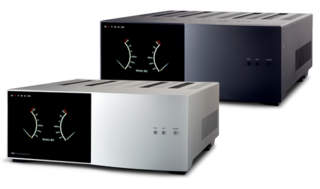ANTHEM M1 Mono Amp - Anthem
|
|
Information
Anthem | M1
State-of-the-Art Monaural Amplifier
The highest sound quality at all volume levels, flat frequency response into any load, and stable into the most difficult loads. The Statement M1 is a state-of-the-art monaural amplifier delivering 1,000 watts into 8 ohms and 2,000 watts into 4 ohms or less with THD remaining under 0.1% from 20 Hz to 20 kHz. Designed and engineered in our advanced research center in Ottawa, Canada, the M1 is manufactured in our Toronto facility.
More than just a slim, technologically advanced monaural design, the M1 demonstrates that Class D architecture isn't fundamentally flawed, it simply hasn't been implemented well in the past, mainly because it required such a heavy commitment to R&D. We’re fortunate to have the in-house resources to create such a groundbreaking product and one listen will reveal the truly extraordinary nature of this amplifier.
Cutting Edge Technology & Design
Full resolution of all of the sonic subtleties and complexities in the input signal.
Accurate reproduction of the full dynamic range of the signal.
Output stage is never allowed to clip.
No compression as output increases.
Flat frequency response into any load, without having to resort to digital conversion or equalization to compensate.
Stable into all loads including open circuit and short circuit.
A low noise floor.
Exceptional efficiency with low heat output.
An amp so mechanically silent it will suit even the quietest listening room.
A design that allows multiple units to be stacked with no danger of overheating.
All of the above delivered at a price point that while not inexpensive, delivers virtually limitless dynamic fidelity.
Best Value in the Market
The M1 enjoys all of the attributes of our award-winning Statement Class AB amplifiers but through exclusive Anthem technologies, goes far beyond the current capabilities of Class A, Class AB and prior Class D amplifiers in the market.
The proprietary design employs all of the advantages of a Class D amplifier — high output, high efficiency, compact size — while avoiding the typical Class D limitations such as difficulty driving low-impedance (high-end) speakers, power line contamination, reliability issues and substandard audio quality. The absence of accurate dynamics is so common that it frequently goes unnoticed, but through the M1, music and movies are delivered with breathtaking realism.
POWER!
2,400W into 3 ohms
2,000W into 4 ohms
1,000W into 8 ohms
* These figures are continuous from 20 Hz to 20 kHz at less than 0.1% THD+N. The M1 can deliver 2 kW continuously when fed by 240V mains and 2 kW for several seconds when fed by a dedicated 120V 15A line.
Addressing the Class D bias
The “D” in Class D does not stand for digital. It was simply the fourth type of amp recognized and classified by the IEEE. The first was Class A, the second Class B, the third Class C, etc.
Contrary to the bias that exists among high-end enthusiasts and across the industry in general, the Class D design is not inherently flawed. The truth is that no existing designs have been able to reach the Class D's inherent potential for performance. It is not the technology that yields fine audio performance but rather the implementation of the technology. At Anthem, we agree that most Class D amplifiers are poor performers. However the M1 uses Class D amplification of a different ilk (see later section on Class D for a full discussion).
The M1 is not a digital amp!
There are no A/D or D/A converters in the signal path. The amplifier’s control system continuously varies the width of the output pulse train in direct relation to the analog input signal. In essence, a side-to-side variation in width is analogous to a signal’s more familiar up-and-down amplitude variation, not at all the same as a digital string of 1s and 0s where all pulses have the same width.
Exceptional efficiency
Much has been written about Class D amps having twice the efficiency of conventional amplifiers at full output, but there's more to this. Under normal conditions an amplifier operates at only a fraction of its full output capability. At 1/8th of its maximum output (the typical working level of an amplifier), our M1 is six times more efficient than a conventional amplifier.
Slim Size, Beefy Power!
Never judge an amp by its size or its rack space
Amplifiers are often judged by their size and weight, the beefier the better since more power requires a physically heavier, larger amplifier. Or does it? It all depends on the design. When rack-mounted, the 20-kb M1 occupies only one rack space but despite its size can deliver 1,000W into 8 ohms and 2,000W into 4 ohms.
Cool running
The M1’s cooling system quickly and efficiently moves heat from the interior of the amplifier to exterior heat sinks. Sealed copper pipes within the amp contain a small amount of special fluid held under a vacuum. When the temperature at one end of the pipe rises — the end adjacent to the amplifier's heat sources — the fluid in that end evaporates. This vapor is then naturally drawn to the cooler end of the pipe, along the heat sink on the side of the amp’s chassis where it condenses. From there a copper wick returns the fluid to the hotter end of the pipe. This heat transfer process is many thousands of times faster and more efficient than cooling through metal heat sinks alone. This system eliminates the need for fans, allowing multiple M1s to be stacked with no danger of overheating. It also means the amplifier is so mechanically quiet it will suit even the quietest listening rooms.
No noise is good news
With an absence of noisy fans and a noise floor well below that of a high-end preamplifier, the M1 is a critical listener's dream.
Specifications
Power Output continuous, 20 Hz to 20 kHz, <0.1% THD+N
8 Ω 1000 W
4 Ω 2000 W
3 Ω 2400 W
2 Ω >2000 W depending on line voltage regulation
With 120V AC supply the amplifier’s maximum output into impedances 4 Ω and lower, as well as its maximum duration, vary depending on line voltage regulation.
Frequency Response 20 Hz to 20 kHz
Open circuit +/- 0.1 dB
8 Ω +/- 0.1 dB
4 Ω +/- 0.1 dB
2 Ω +/- 0.2 dB
Power Bandwidth 1000 W at 8 Ω 5 Hz to 45 kHz
THD+N at 1 kHz, 8 Ω
1 W 0.01 %
10 W 0.01 %
100 W <0.03 %
1000 W <0.06 %
IMD 19 kHz + 20 kHz, CCIF 0.003%
S/N Ratio ref. 1000 W, IEC-A 113 dB
Voltage Gain 29 dB
Input Sensitivity 100 mV for 1 W output, 3.2 V for 1000 W output (8 Ω)
Input Impedance 10 kΩ (RCA), 20 kΩ (XLR)
Damping Factor 800 to 1400 depending on frequency
XLR Configuration Pin 1: Ground, Pin 2: Positive, Pin 3: Negative
POWER REQUIREMENTS
Consumption in a typical music/theater installation
standby mode, 120V mains <1 W
standby mode, 240V mains <2 W
operate mode, idle 33 W
typical operation 300 W
Where mains voltage is 120V, one dedicated 15A circuit per amplifier is recommended depending on speaker. A 20A circuit is adequate for two amplifiers playing music where speaker impedance is 8 Ω. This product operates from a single phase AC power source that supplies between 108V and 264V at a frequency of 50 or 60 Hz.
DIMENSIONS
Height with feet 2 1/4 inches (5.7 cm)
Height without feet 1 rack unit
Width standard handles 19 1/4 inches (49 cm)
Width rackmount handles 19 inches (48.3 cm)
Depth 18 3/4 inches (47.6 cm)
Weight (unpacked) 20 lb (9 kg)

